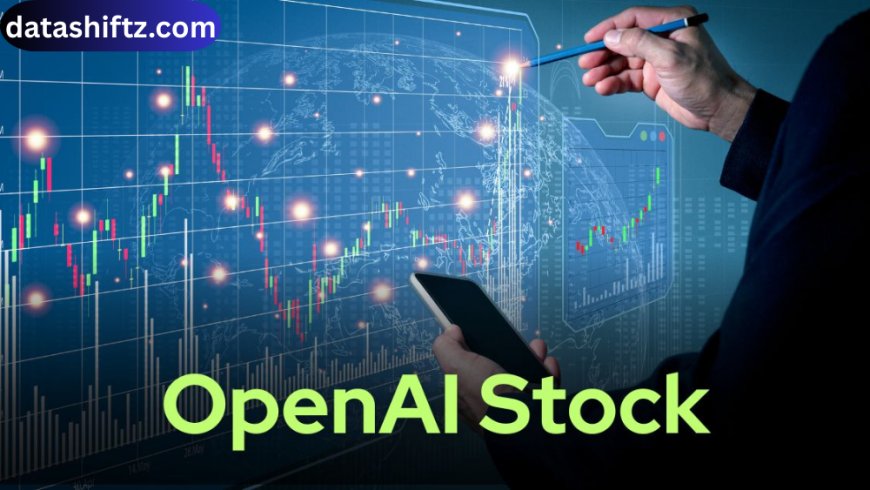OpenAI Stock: What You Need to Know in 2025

Introduction
OpenAI has become one of the most talked-about names in technology and artificial intelligence. With products like ChatGPT, DALL‑E, and others capturing the imagination of both the public and industry, many investors are asking: Can I buy OpenAI stock? How is OpenAI valued, and when might it go public? This article dives into these questions, covering the current status, valuation metrics, and ways to gain exposure to OpenAI, along with the risks and what to watch for in the future.
OpenAI’s Current Status
What We Know
-
Private company: As of 2025, OpenAI is not listed on any public stock exchange. That means there's no ticker symbol, and retail investors cannot buy shares in the usual way.
-
Ownership structure: OpenAI operates as a public benefit corporation (for‑profit arm) under a nonprofit parent. This unusual structure helps balance its mission with commercial pressures.
-
Valuation: Recent private rounds and secondary share sale discussions place its valuation in the neighborhood of US$300 billion to US$500 billion depending on the deal.
Key Metrics & Highlights
| Metric | Value / Status | Notes |
|---|---|---|
| Publicly Traded? | No | Privately held company as of mid‑2025. |
| Latest Valuation | ~$300B to ~$500B | Depending on whether it's primary funding or secondary share sales. |
| Revenue Growth | Strong growth reported | Revenue has been increasing rapidly due to enterprise AI and ChatGPT subscription uptake. |
| Cash Burn & Costs | High | Significant spending on compute, infrastructure, model training. |
Can You Invest in OpenAI Stock Now?
Direct Investment
-
Not possible for retail investors: Since OpenAI is not public, you cannot buy its shares on stock exchanges like NASDAQ or NYSE.
-
Accredited / institutional investors: Some private or pre‑IPO marketplaces may allow access, if you satisfy certain criteria (net worth, investment minimums etc.).
Indirect Exposure (Alternatives)
Here are some ways to get exposure to OpenAI’s growth without direct ownership:
-
Invest in strategic partners / suppliers: Companies like Microsoft, Nvidia, etc., which have deep ties to OpenAI, often benefit when OpenAI scales.
-
AI‑focused ETFs or funds: Some funds are oriented toward artificial intelligence themes and may hold companies connected to OpenAI’s ecosystem.
-
Pre‑IPO platforms: For wealthy or institutional investors, secondary sales or private placements may offer chances to acquire equity. But these are illiquid and risky.
Considerations & Risks
-
Liquidity: Private shares are not easily sold; pricing can be opaque.
-
Valuation fluctuations: Since it’s private, valuations are based on rounds and internal negotiations, not market pricing.
-
Regulatory & competitive risk: Regulations on AI are tightening; competition is fierce with many large tech players in the field.
-
Capital intensity: OpenAI’s spending on infrastructure, compute, R&D is enormous, which can drive large losses before profitability.
What to Watch For
Potential Trigger Events
-
Initial Public Offering (IPO)
-
There is speculation that OpenAI might go public in the coming years, but as of now, no official IPO date has been announced.
-
An IPO could offer a way for most investors to own part of OpenAI.
-
-
Secondary Share Sales
-
These allow employees and early investors to sell some shares to new investors, sometimes giving clues to valuation. For example, a planned secondary stock sale was in talks valuing OpenAI around US$500 billion.
-
-
Strategic Investments
-
Partnerships, acquisitions, or hardware initiatives might change how OpenAI’s financials scale or how it’s structured.
-
Key Financial / Operational Indicators
-
Growth in paid users or subscriptions (e.g. ChatGPT paid plans)
-
Revenue vs. cost trajectory, especially compute/infrastructure costs
-
Margins in enterprise business vs. consumer business
-
The rate of cash burn and when (or if) the company becomes profitable
Pros & Cons of Investing in OpenAI (If / When It Becomes Public)
-
Pros
-
Exposure to one of the leading AI companies in the world.
-
Potential high growth as AI adoption accelerates globally.
-
Benefit from network effects, ecosystem, and technological advantages.
-
Possible strong returns if OpenAI builds dominant products or platforms.
-
-
Cons
-
High valuation risk – might be over‑priced which can lead to sharp declines.
-
Regulatory risk (governments could impose constraints on data, AI safety, privacy).
-
Competition from giants like Google, Meta, Amazon and smaller startups.
-
Infrastructure costs are massive — risk of negative cash flow for many years.
-
Summary & Conclusion
OpenAI is a powerhouse in AI innovation and has rapidly gained attention not only for its technology but also for its value. However, it remains private, which means ordinary retail investors cannot buy its stock directly. Its valuation is massive — somewhere between US$300‑500 billion in recent private rounds and secondary share sales.
If you're interested in investing, your options are to follow developments toward an IPO, consider indirect exposure via public companies linked to OpenAI, or, if you qualify, explore private markets. Keep a close eye on financial metrics such as revenue growth, cost / cash burn, user base expansion, and regulatory shifts.





























